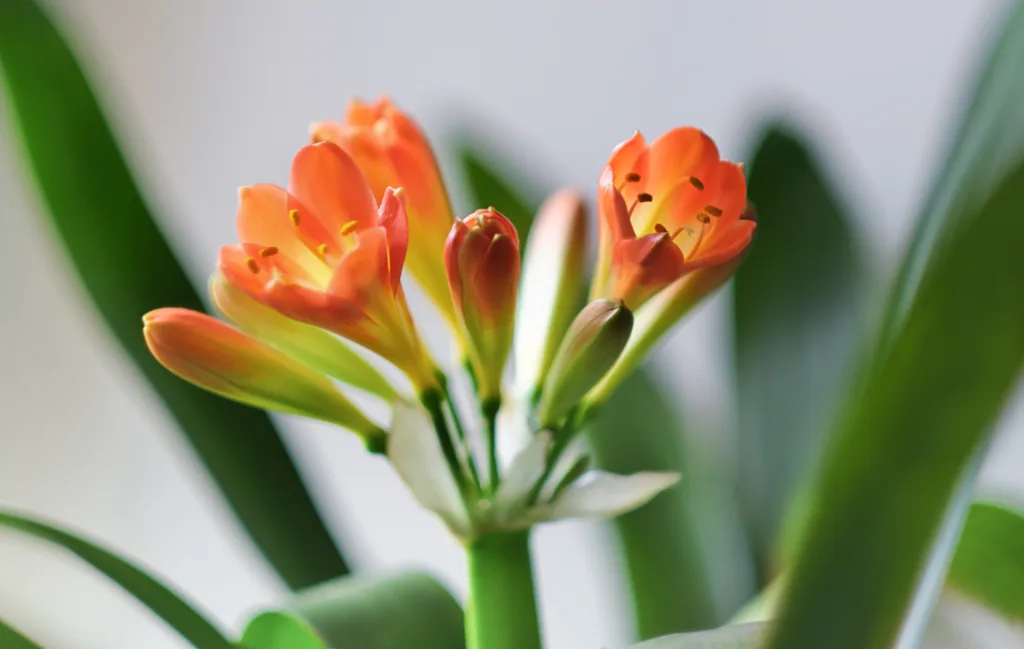Growing the clivia plant indoors combines natural elegance with manageable plant care, making it an ideal choice for home gardeners who appreciate structure and style without the need for high maintenance. Known for its broad, glossy leaves and radiant flowers that bloom in vibrant shades of orange, red, and yellow, the clivia plant adds architectural interest and warmth to any living space. Indoor gardeners across the United States adore how this South African native adapts gracefully to indoor environments, delivering a pop of color during the gloomy winter months when most other plants rest.
When it comes to the clivia plant, successful growth depends on understanding its unique temperament. It rewards consistent yet restrained attention and offers lasting beauty that aligns well with home design ideals centered around color, form, and natural serenity.
Ideal Light Conditions for Indoor Clivia Plant Growth
Light plays a crucial role in encouraging the clivia plant to bloom and maintain healthy foliage. These plants prefer bright, indirect light over prolonged exposure to direct sun. A north or east-facing window is generally ideal. Southern exposures can also work, but only if filtered with light curtains or positioned a few feet back from the window.
Too much direct sunlight can scorch the leaves, leaving discolored, dry patches. On the flip side, insufficient light often leads to a sluggish plant with floppy leaves and no flower development.
For those living in smaller spaces or apartments with limited natural light, clivia can still thrive—its tolerance for lower light levels rivals that of other indoor plants such as the cyclamen or olive trees grown indoors.
Watering Schedule and Moisture Needs
The clivia plant’s watering needs reflect its origin from shaded forest floors. It prefers a moderate watering schedule that keeps the soil evenly moist during active growth seasons, typically spring and summer. Overwatering, however, is one of the quickest ways to compromise a clivia's health.
- During spring and summer: Water when the top inch of soil feels dry. Avoid letting the plant sit in a saucer filled with water.
- In fall and winter: Reduce watering significantly—once every two to three weeks is usually sufficient. This dormant period encourages the plant to rest and prepares it for blooming.
Drainage is key. Choose pots with sufficient drainage holes and use a loose potting mix that allows air and excess water to pass through freely.
Best Soil and Fertilizer Choices for Healthy Clivia Growth
A well-draining, slightly acidic soil mix helps the clivia thrive. Look for potting blends containing peat, perlite, and compost. Avoid heavy garden soil or mixes that retain moisture too long, as they promote root rot.
Fertilizing the clivia plant is not overly demanding but needs thoughtful timing:
- Use a balanced 20-20-20 water-soluble fertilizer every 4–6 weeks during the growing period.
- Stop fertilizing entirely once fall begins to encourage rest and future flowering.
Too much nitrogen-rich fertilizer encourages lush foliage at the cost of flower production, so balance is essential. If you're managing other houseplants such as fig trees or tall indoor plants for small spaces, this same mindful balance usually applies.
Temperature and Humidity Requirements
Clivia is sensitive to extremes. Indoor temperatures between 60°F to 75°F suit them best during active growing months. Cooler nighttime temperatures (45°F to 55°F) during the fall and early winter promote healthy bud formation.
Humidity isn’t a high priority—clivia handles regular indoor levels well. However, if your home experiences excessive dryness during heating seasons, occasional misting or a pebble tray may help the leaves remain vibrant and slow to brown.
Keep the clivia plant away from direct heat sources like radiators or vents, as rapid changes in temperature or bursts of hot air can cause stress to the plant.
Flowering Cycle and Encouraging Blooms
One of the most rewarding aspects of owning a clivia plant is witnessing its spectacular bloom—a vertical cluster of tubular flowers that opens over the course of weeks, treating the eye to a burst of cheerful color.
To encourage blooms:
- Reduce watering and expose the plant to cooler temperatures for 6 to 8 weeks in the fall. This simulates the plant’s natural dormant period and triggers bud development.
- Once buds appear, bring the plant back to a brighter and warmer area and resume a normal watering schedule.
While anticipation requires patience, it’s the quiet rhythm of these blooming cycles that make them beloved in homes seeking both tranquility and beauty.
Pruning and General Maintenance
Clivia plants grow slowly but steadily, requiring minimal pruning. Focus your efforts on removing yellowing or dried leaves near the base of the plant. Use sterilized shears, cutting cleanly at the soil line to prevent disease.
When flowers fade, remove the whole flower stalk near its base—but do not remove green leaves unless they are damaged. Leaves are vital year-round and provide the plant with energy even during dormancy.
Maintaining general cleanliness by wiping leaves occasionally with a damp cloth helps keep pests away and lets the plant photosynthesize efficiently.
Common Pests and Problems to Watch For
Though relatively resistant to most pests, the clivia plant can sometimes fall prey to the usual indoor nuisances:
- Mealybugs: Look for cottony clusters between leaf joints.
- Scale insects: These appear as small brown lumps attached to leaves and stems.
- Fungus gnats: Particularly common when soil remains too moist.
Pest control can often be handled with neem oil or insecticidal soap applied with a soft cloth. Avoid harsh chemicals indoors and increase air circulation when possible.
Root rot remains the most serious issue, almost always linked to overwatering or poor drainage. If you notice soft, foul-smelling roots during repotting, remove damaged sections with sanitized scissors and reduce the watering frequency going forward.
Propagation: Expanding Your Indoor Garden
Clivia propagation is typically done by separating offsets or “pups” that grow around the base of mature plants. Here’s how you can do it:
- Gently uproot the mother plant after flowering has ended.
- Clear away excess soil and identify individual offshoots with their own roots.
- Separate the pups with a clean, sharp blade.
- Replant each in its own pot with fresh soil and water lightly.
New plants may take 2 to 3 years to bloom, but the satisfaction of seeing your homegrown clivia thrive is priceless. Lovers of propagating their favorite green friends might also enjoy propagating rosemary at home, another plant that adds both beauty and function to your space.
Clivia and Indoor Aesthetics
Clivia’s lush foliage and vibrant vertical flowers give it a distinct architectural quality, making it a popular choice in home design. Whether placed in a ceramic pot on a pedestal or flanking a sofa in a light-filled corner, the clivia plant’s structural leaves and subtle fragrance offer natural elegance without overwhelming a room’s ambiance.
Pairing clivia with other low-maintenance yet design-conscious plants such as succulents or bougainvillea can elevate the entire feel of a room. Their combined textures and colors often bring depth and interest, making them favorites among women who enjoy carefully curated living environments.
Final Thoughts: Clivia Plant as a Long-Term Indoor Companion
Caring for a clivia plant indoors is more than a seasonal hobby—it’s a commitment to a quiet, slow-growing beauty that rewards steady companionship. With its manageable care routine, stunning blossoms, and sculptural greenery, the clivia fits effortlessly into American homes where both style and substance matter.
For those dedicated to enriching their living spaces, the clivia plant gives years of beauty with minimal fuss—earning its place among the most graceful indoor flora. Thoughtful placement and seasonal attention will ensure it remains a cherished companion, faithfully bringing vibrant life back into your space year after year.



